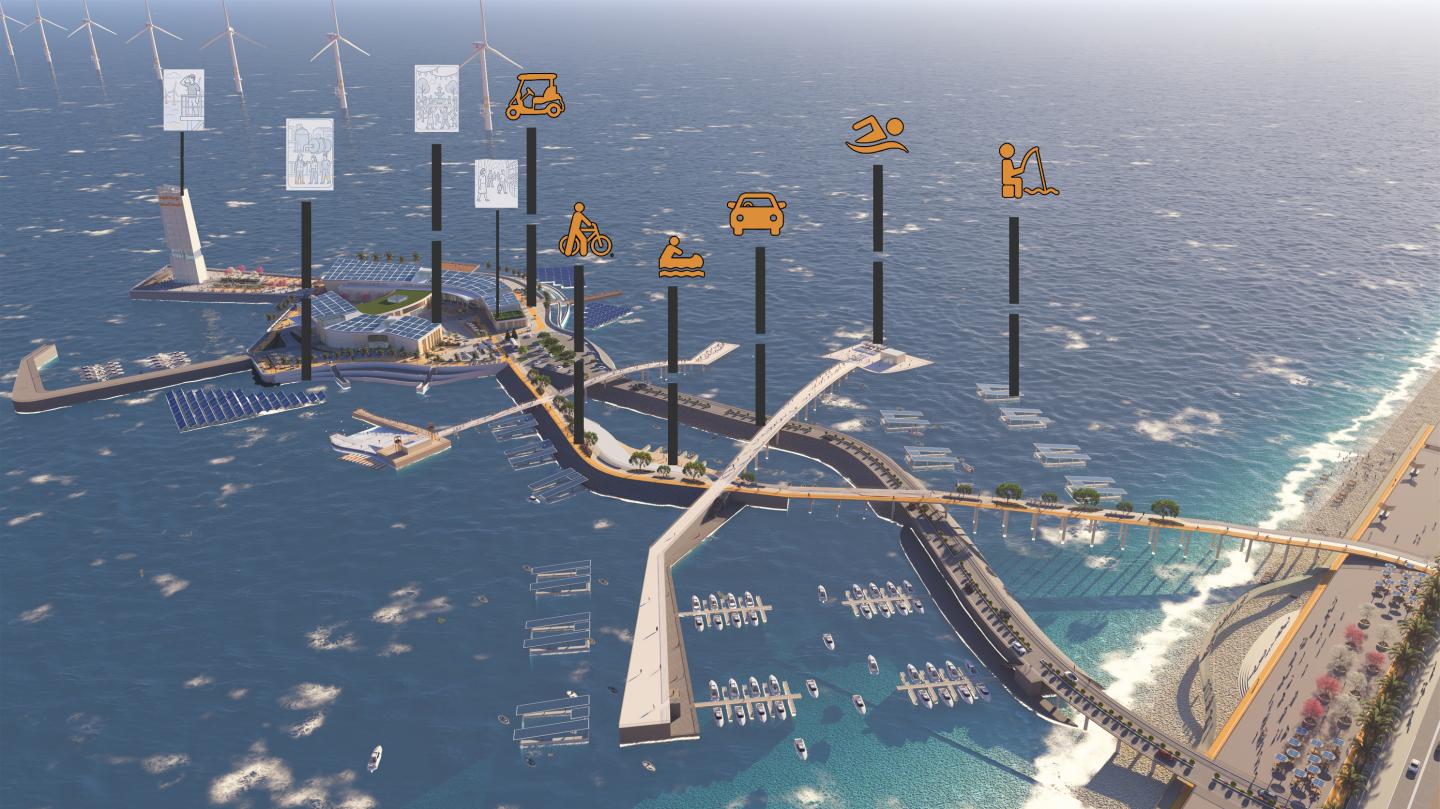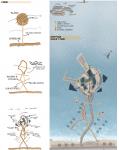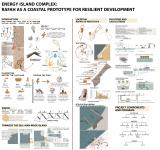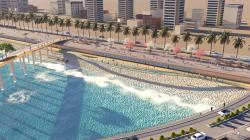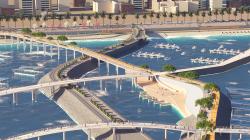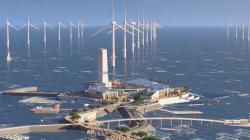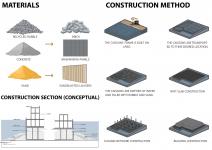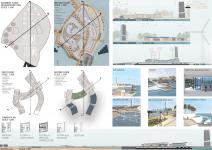The starting point for the Energy Island Complex was a fundamental question: What type of project could support Gaza’s long-term recovery after war while addressing one of its most persistent and devastating challenges?
Gaza’s energy crisis, already severe before the war, became catastrophic during the last war. complete power outages, total shutdowns of desalination plants, hospital failures, and disruptions to food production systems exposed the fragility of Gaza’s basic infrastructure. Electricity is not only a utility, it is the foundation for life: powering water systems, food production, healthcare, and economic activity. Without energy, Gaza cannot rebuild.
This project proposes a transformative solution: an artificial island off the coast of Rafah, fully powered by renewable energy sources. It combines wind turbines, solar panels, and wave energy devices to generate clean electricity. This energy supports a reverse osmosis desalination plant, vertical farming systems, aquaculture, and educational facilities, creating a self-sufficient ecosystem that addresses multiple needs simultaneously: water, food, economy, knowledge, and awareness.
Rafah was selected as the site for its strong environmental potential (high wind and solar exposure), strategic coastal location, and symbolic value as Gaza’s southern gateway. Its geological conditions make it suitable for offshore development, and its position allows the island to expand usable space without consuming the crowded shoreline, preserving it as public space.
Architecturally, the project reuses rubble from destroyed buildings, embedding resilience and memory into the physical design. A bridge connects the island to land, functioning as both infrastructure and public experience. The overall design creates not just a place, but a model scalable, symbolic, and rooted in real needs, for how architecture can lead recovery and resilience in conflict-affected coastal regions. A complex that serves as both infrastructure and a community space.
2025
The technical foundation of the Energy Island Complex is built on an integrated system of renewable energy sources that respond directly to Rafah’s environmental conditions. The project combines 40 offshore wind turbines, over 500 solar panels distributed across rooftops, floating structures, and landscape surfaces, along with wave energy converters placed around the island. Together, these systems are designed to generate approximately 0.7 terawatt-hours annually, supplying the energy needed to operate a large-scale reverse osmosis desalination plant capable of producing 120,000 cubic meters of fresh water per day. The island’s infrastructure also supports vertical farming systems distributed across building courtyards and rooftops, and aquaculture ponds shaded by solar-integrated net structures to support food production and marine biodiversity. Structurally, the island is anchored using prefabricated caisson foundations, filled with recycled war rubble and sand to minimize environmental impact and reinforce resilience. Buildings use recycled concrete and sandblasted louvers to adapt to Gaza’s coastal climate, ensuring durability and passive environmental control. The project includes an "Energy Hub" that houses public spaces, educational labs, housing units, and workshops, while treated grey and black water is reused for irrigation. A multifunctional bridge connects the island to land, providing access for pedestrians, vehicles, and boats, and integrating floating recreational areas. Every component: energy, water, food, architecture, and mobility is designed to operate independently of external resources, making the project a scalable and adaptable model for post-conflict recovery and sustainable coastal development.
Students: Razan Murad Abu Rayyan, Dana Issa Awwad
Supervisor: Dr. Maha Samman
